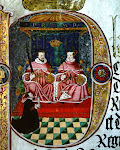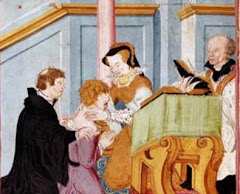
I agree with other posters on the blog in their criticism of the claim. It seems to me that the owner of the portrait, and historian Linda Porter, primarily want the portrait to be of Mary and lack compelling evidence to back this assertion. Porter’s statement that, ‘Plus which, to me at least, it looks like her’, is not valid evidence to be used for the case that this painting depicts England’s first anointed queen regnant. It is ultimately a rather empty statement that doesn’t contribute anything to be the debate. Porter also argues that a portrait once believed to depict Katherine Howard which was then questioned by historians and now accepted is proof that identify of sitters can come full circle, with historians now accepting long established judgments. [1] In this I would also disagree considering the ‘Katherine Howard’ portrait is still debated amongst historians, with many rejecting the idea that it is of Katherine. In fact that National Portrait Gallery have decided to label the portrait as ‘unknown woman, formerly known as Catherine Howard’. Though the portrait was recently used in the Hampton Court exhibit on the six wives of Henry VIII, the curator Brett Dolman noted that there are ‘no undisputed portraits of Katherine’.[2]
As a poster on the TudorHistory.org Blog has pointed out, the portrait dates to the 1550s and therefore does not date to c.1537 (the date which the owner of the portrait believes it to belong to). So we can dismiss the notion that is of Mary at the time of her brother’s birth. And I think, owing to the lack of evidence and the presence of a degree of personal interest in this (after all a portrait of a major Tudor royal is going to fetch quite a bit!), we can dismiss the notion that is of Mary. Perhaps the possibility that the portrait depicts Margaret Douglas, countess of Lennox should be explored further.[3]

The full article, from The Times, can be read here:
http://www.timesonline.co.uk/tol/life_and_style/court_and_social/article6793832.ece
~~~~~~~~
[1] Porter is directly referring to the current debate surrounding the portrait of an unknown woman by Hans Holbein the Younger, a version of which is housed in the National Portrait Gallery, London. For some time the sitter was believed to depict Katherine Howard, Henry VIII’s fifth wife and Mary’s fourth step-mother.
[2] Statement made in an interview Dolman did with the BBC History Magazine on the exhibit (Vol. 10, no 4; April 2009). Dolman does provide evidence for the portrait being of Katherine but certainly does not present this as something determined, which Porter implies.
[3] Margaret Douglas was first cousin to Mary. Margaret mother was Margaret Tudor, consort to James IV of Scotland and sister to Henry VIII. Mary and Margaret were very close, to the degree that Mary wished Margaret to be her heir and not Elizabeth.









.JPG)




